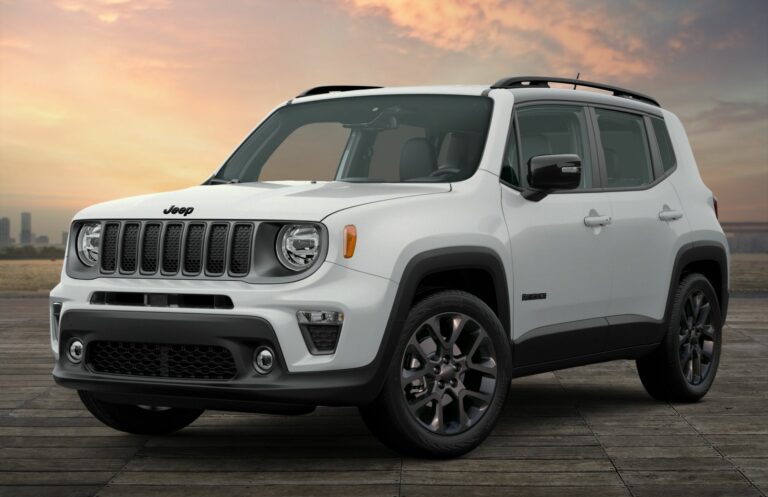2004 Jeep Grand Cherokee Roof Rack: Unlocking Your WJ’s Full Potential
2004 Jeep Grand Cherokee Roof Rack: Unlocking Your WJ’s Full Potential jeeps.truckstrend.com
The 2004 Jeep Grand Cherokee, part of the WJ generation, is renowned for its blend of off-road capability, on-road comfort, and rugged good looks. While it offers ample interior space for passengers and everyday cargo, adventurers, DIY enthusiasts, and families often find themselves needing more. This is where the 2004 Jeep Grand Cherokee Roof Rack comes into play. More than just a simple accessory, a well-chosen roof rack system transforms your WJ into an ultimate utility vehicle, dramatically expanding its carrying capacity and opening up a world of possibilities for hauling gear that simply won’t fit inside. From kayaks and bikes to camping equipment and construction materials, a robust roof rack is an indispensable upgrade for any 2004 Grand Cherokee owner looking to maximize their vehicle’s versatility and embrace the spirit of adventure.
Understanding Your 2004 Jeep Grand Cherokee’s Roof Rack System
2004 Jeep Grand Cherokee Roof Rack: Unlocking Your WJ’s Full Potential
The 2004 Jeep Grand Cherokee (WJ chassis) typically comes equipped from the factory with integrated roof side rails. These are the fixed, longitudinal bars running from front to back along the edges of your roof. While these rails provide attachment points, they don’t offer a flat surface or secure points for cargo on their own. The "roof rack" system, in this context, refers to the crossbars that attach to these factory side rails, running perpendicular (side-to-side) across the roof. These crossbars are the foundation upon which all other roof-mounted accessories – such as cargo baskets, bike carriers, kayak mounts, or ski racks – are secured.
A complete roof rack system for your 2004 WJ generally consists of:
- Factory Side Rails: Pre-installed on most models, these are the base.
- Crossbars: Two (or sometimes three) horizontal bars that attach to the side rails. These are the primary load-bearing components.
- Towers/Feet: The mechanisms that connect the crossbars to the side rails, often featuring a clamping or locking design for secure attachment.
- Locks: Integrated or optional locks to secure the crossbars to your vehicle and prevent theft of the rack itself.

The Undeniable Benefits of a Roof Rack for Your WJ
Investing in a roof rack for your 2004 Jeep Grand Cherokee offers a multitude of advantages, significantly enhancing its utility and your lifestyle:
- Expanded Cargo Capacity: This is the primary benefit. Free up interior space by moving bulky, dirty, or oddly shaped items to the roof. Think luggage for family trips, camping gear, or even moving boxes.
- Specialized Gear Transport: Designed to safely carry items that won’t fit inside, such as:
- Outdoor Sports Equipment: Bicycles, kayaks, canoes, paddleboards, surfboards, skis, snowboards.
- Camping Gear: Tents, sleeping bags, coolers, portable grills, and oversized duffel bags.
- Construction Materials: Lumber, pipes, ladders, and other long items.
- Interior Protection: Keeps mud, dirt, sand, and moisture from sports equipment or tools out of your vehicle’s clean interior.
- Increased Passenger Comfort: With gear on the roof, passengers have more legroom and personal space inside the cabin, making long trips more enjoyable.
- Adventure Readiness: A roof rack signals readiness for adventure, allowing spontaneous trips to the trails, lakes, or mountains without worrying about how to transport your gear.
- Versatility: Most roof rack systems are modular, allowing you to swap out different mounts (bike, ski, cargo basket) depending on your needs for a particular trip.
Types of Roof Rack Systems for the 2004 Grand Cherokee (WJ)
Given that the 2004 WJ typically has factory-raised side rails, the most common and practical roof rack systems available fall into these categories:
-
Crossbar Systems (Mounting to Factory Side Rails):
- Description: These are the most popular and easiest to install. They consist of two crossbars that clamp directly onto your existing factory side rails.
- Brands: Thule, Yakima, Rhino-Rack, Smittybilt, ROLA, and numerous generic/OEM-style aftermarket options.
- Pros: Easy installation, relatively affordable, secure, maintains low profile.
- Cons: Limited to the length of the crossbars, may not accommodate extremely wide loads without specialized accessories.
-
Cargo Baskets/Platforms:
- Description: These are large, open baskets or flat platforms that mount onto a crossbar system. They provide a versatile surface for strapping down various types of cargo.
- Brands: Thule Canyon XT, Yakima LoadWarrior, Rhino-Rack XTray, ARB, Smittybilt Defender.
- Pros: Excellent for odd-shaped items, multiple small items, or recovery gear. Distributes weight evenly.
- Cons: Increases wind noise and drag significantly, can impact fuel economy, higher profile.
-
Specialty Carriers:
- Description: These are specific attachments designed for particular items, mounting directly to your crossbars.
- Examples: Bike racks (fork mount, frame mount, wheel mount), kayak/canoe carriers (J-cradles, saddles, rollers), ski/snowboard carriers, enclosed cargo boxes (roof boxes).
- Pros: Secure and specialized transport for specific gear.
- Cons: Dedicated use, may need to be removed when not in use.
How to Install a Roof Rack (Crossbars) on Your 2004 Grand Cherokee
Installing crossbars on your 2004 WJ’s factory side rails is generally a straightforward process that most DIYers can accomplish.
Tools You’ll Likely Need:
- Allen wrench/Hex key (often provided with the rack system)
- Tape measure (for even spacing)
- Possibly a small wrench or screwdriver, depending on the system
General Step-by-Step Guide:
- Unpack and Identify Components: Lay out all parts. Identify the front and rear crossbars (they may be different lengths or have specific mounting points). Familiarize yourself with the towers/feet and any locking mechanisms.
- Measure and Mark Spacing: Consult your roof rack’s instructions for recommended crossbar spacing. Typically, this is between 24-32 inches (60-80 cm). Measure from the front or rear of the side rails and mark the desired positions on both sides. Even spacing is crucial for stability and load distribution.
- Assemble Towers to Crossbars: Attach the mounting towers/feet to each end of the crossbars. Ensure they are loosely assembled so they can adjust to the width of your side rails.
- Place Crossbars on Side Rails: Carefully lift the assembled front crossbar and place its towers onto your Grand Cherokee’s factory side rails at your marked positions. Do the same for the rear crossbar.
- Adjust and Tighten:
- Ensure the crossbars are centered and parallel to each other.
- Adjust the width of the towers so they clamp securely around the side rails.
- Begin to tighten the bolts or levers on each tower, working evenly from side to side and alternating between front and rear. Do not fully tighten one side before moving to the next.
- Once snug, apply final tightening with the recommended tool until the crossbars are firmly secured and cannot be moved by hand.
- Install Locks (If Applicable): Insert and lock any provided security caps or lock cylinders. This prevents theft of the crossbars.
- Test for Security: Give the crossbars a good shake. They should feel rock-solid with no movement. Double-check all fasteners.
Important Note: Always refer to the specific installation manual provided by your roof rack manufacturer, as steps and hardware can vary slightly between brands.
Important Considerations for Your WJ Roof Rack
Before loading up your new roof rack, keep these crucial factors in mind:
- Weight Capacity: Every roof rack system has a maximum weight capacity (dynamic – while driving, and static – when parked). Never exceed this limit, nor your vehicle’s manufacturer-recommended roof load limit (found in your owner’s manual). Overloading can damage your rack, your vehicle, and create a dangerous driving situation.
- Aerodynamics and Fuel Economy: Adding a roof rack, especially a cargo basket or box, significantly increases drag. This will lead to reduced fuel economy, sometimes by 10-20% or more. Remove the rack when not in use to save fuel.
- Wind Noise: Crossbars, and especially cargo baskets, can create noticeable wind noise at highway speeds. Some manufacturers offer aerodynamic crossbar designs (e.g., aero bars, wing bars) to mitigate this.
- Height Clearance: Be mindful of your vehicle’s new total height, especially when entering garages, carports, drive-thrus, or low-clearance areas.
- Security: Ensure your cargo is properly secured with straps, nets, or locks to prevent shifting or loss during transit. Lockable crossbars and carriers add security against theft.
- Maintenance: Regularly inspect your roof rack for loose fasteners, corrosion, or damage, especially after long trips or exposure to harsh weather. Clean off dirt and road grime periodically.
Practical Advice and Tips for Using Your Roof Rack
- Load Distribution: Distribute weight as evenly as possible across the crossbars. Place heavier items low and centered within a cargo basket.
- Secure Everything: Use high-quality tie-down straps or a cargo net. Wiggle your cargo to ensure it’s secure before driving off. A common mistake is not tightening enough.
- Check Frequently: On long trips, pull over periodically to check that your cargo is still secure and straps haven’t loosened.
- Cleanliness: Clean your roof rack and the vehicle’s roof contact points regularly to prevent dirt and grit from scratching the paint.
- Remove When Not in Use: If you don’t use your roof rack frequently, consider removing the crossbars to improve fuel economy and reduce wind noise.
Potential Challenges and Solutions
- Wind Noise:
- Challenge: Annoying whistling or humming at highway speeds.
- Solution: Ensure crossbars are installed correctly. Consider aerodynamic crossbar designs. Add a fairing (wind deflector) to the front crossbar.
- Rust/Corrosion on Factory Rails:
- Challenge: Older WJ factory rails can show signs of rust or fading plastic.
- Solution: Clean and treat rust spots. Consider painting or replacing the plastic caps/covers if badly degraded. Ensure aftermarket rack feet don’t trap moisture.
- Lost or Damaged Parts:
- Challenge: Small components like end caps, keys, or bolts can go missing or break.
- Solution: Store spare parts. Many manufacturers offer replacement parts online.
- Damage to Vehicle Roof/Paint:
- Challenge: Scratches, dents, or paint damage from improper installation, loading, or shifting cargo.
- Solution: Always follow installation instructions precisely. Be careful when loading/unloading heavy or awkward items. Use protective padding under cargo if needed.
Estimated Price Guide for 2004 Jeep Grand Cherokee Roof Racks
Prices for roof rack components can vary significantly based on brand, material, features (e.g., aerodynamic vs. standard bars, locking mechanisms), and whether you’re buying new or used. The table below provides estimated price ranges for common components suitable for a 2004 Jeep Grand Cherokee.
| Item/Type | Description | Estimated Price Range (USD) | Key Features |
|---|---|---|---|
| Basic Aftermarket Crossbars | Pair of steel or aluminum crossbars that clamp onto existing factory side rails. | $100 – $250 | Entry-level, functional, generally square or round bars. Good for occasional use. May not be lockable. |
| Premium Crossbar Systems | High-quality, often aerodynamic aluminum crossbars from major brands (Thule, Yakima, Rhino-Rack). | $300 – $600 | Aerodynamic design for reduced noise/drag, T-slot channels for accessories, higher weight capacity, integrated locking mechanisms, durable finishes. |
| Small/Medium Cargo Basket | Steel or aluminum basket (e.g., 40-50 inches long) that mounts onto crossbars. | $200 – $500 | Provides an open platform for various gear, often with fairings to reduce noise. Good for general camping or luggage. |
| Large/Heavy-Duty Cargo Basket | Larger, more robust baskets (e.g., 55+ inches long) or full platform racks. | $400 – $800+ | Increased capacity, more tie-down points, heavy-duty construction for expedition use. Some platforms offer integrated lighting mounts. |
| Bike Carrier (Roof Mount) | Single bike carrier that attaches to crossbars (fork mount, frame clamp, or wheel mount). | $100 – $300 (per bike) | Secure transport for bicycles, often lockable. Varies by mounting style and ease of use. |
| Kayak/Canoe Carrier | J-cradles, saddles, or stackers designed to hold watercraft on crossbars. | $150 – $400 | Specialized support and tie-down points for kayaks or canoes. Some allow for carrying multiple boats. |
| Ski/Snowboard Carrier | Clamping carrier for skis and snowboards, mounts to crossbars. | $100 – $250 | Securely holds multiple pairs of skis or snowboards, often lockable to prevent theft. |
| Roof Cargo Box (Medium) | Enclosed, lockable storage box for luggage or gear (e.g., 13-16 cubic feet). | $400 – $800 | Weatherproof, secure, aerodynamic. Protects contents from elements and theft. |
Note: These prices are estimates for new products and can fluctuate based on sales, retailer, and specific model features. Installation costs are typically not included as most crossbar systems are DIY friendly.
Frequently Asked Questions (FAQ)
Q1: Can I install a roof rack on my 2004 Grand Cherokee myself?
A1: Yes, absolutely! Most crossbar systems designed for the 2004 Grand Cherokee’s factory side rails are designed for easy, bolt-on installation and come with all necessary hardware and instructions. You’ll typically only need a basic Allen wrench (often included).
Q2: What is the maximum weight I can put on my 2004 Grand Cherokee’s roof rack?
A2: This depends on two factors: the weight capacity of your specific roof rack system and your vehicle’s roof load limit. The 2004 Jeep Grand Cherokee (WJ) typically has a dynamic roof load limit of around 150 lbs (68 kg). Always check your vehicle’s owner’s manual and the roof rack manufacturer’s specifications. Never exceed the lower of the two limits.
Q3: Does a roof rack affect my fuel economy?
A3: Yes, a roof rack, especially with accessories like cargo baskets or boxes, significantly increases aerodynamic drag. This will lead to a noticeable decrease in fuel economy, often by 10-20% or more, particularly at highway speeds. Consider removing the rack when not in use.
Q4: Will a roof rack make my Jeep noisy?
A4: Most roof racks will introduce some level of wind noise, especially at highway speeds. This noise can range from a subtle hum to a noticeable whistle, depending on the rack design, accessories, and vehicle speed. Aerodynamic crossbars and fairings (wind deflectors) can help reduce noise.
Q5: Are all roof racks compatible with the 2004 Jeep Grand Cherokee?
A5: No, not all roof racks are universally compatible. You need a system specifically designed to mount to the 2004 Grand Cherokee’s factory-raised side rails. Major brands like Thule, Yakima, and Rhino-Rack offer fit guides on their websites to ensure you select the correct components.
Q6: How do I maintain my roof rack?
A6: Regular maintenance is simple:
- Periodically check all bolts and fasteners to ensure they are tight.
- Clean the rack and the vehicle’s roof contact points to prevent dirt buildup and scratching.
- Inspect for any signs of corrosion, especially on metal parts, and treat as needed.
- If you live in harsh climates, consider applying a protective wax or coating.
Conclusion
The 2004 Jeep Grand Cherokee is a highly capable vehicle, and adding a roof rack system is arguably one of the most effective upgrades to unlock its full potential. By expanding your cargo capacity and enabling the safe transport of specialized gear, a roof rack transforms your WJ from a capable SUV into an adventure-ready machine. Whether you’re heading to the trails with bikes, loading up for a family camping trip, or simply need extra space for DIY projects, a well-chosen and properly installed roof rack is an invaluable asset. It’s an investment that pays dividends in convenience, utility, and the sheer joy of being able to take all your gear along for the ride, making your 2004 Grand Cherokee truly ready for anything.



